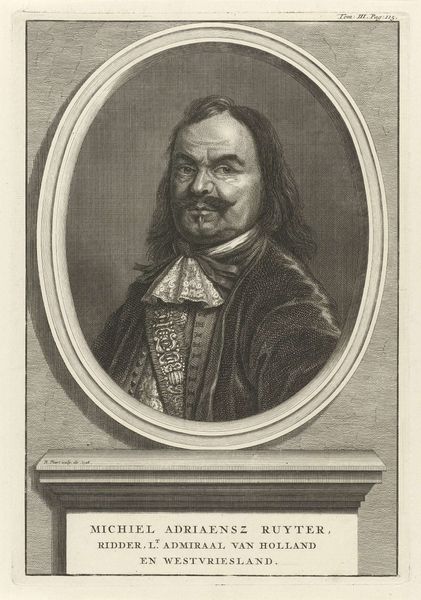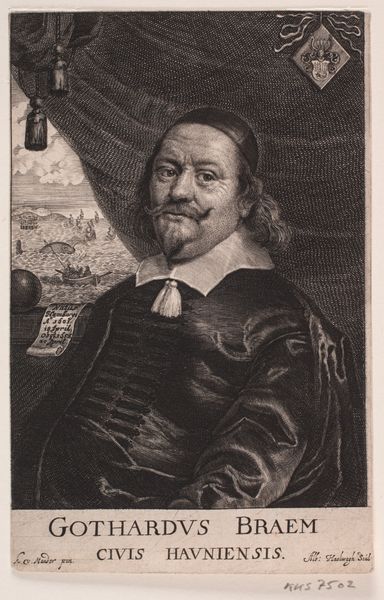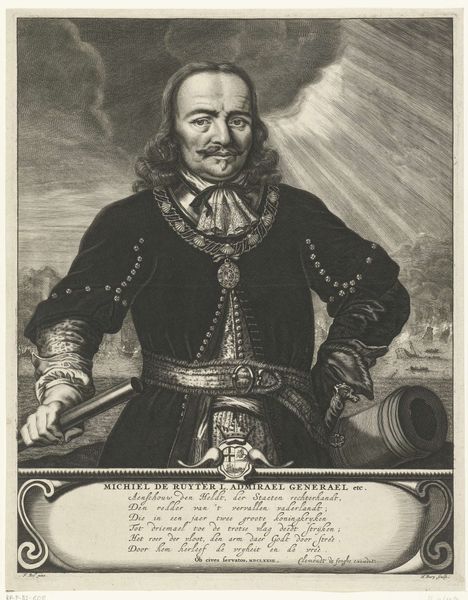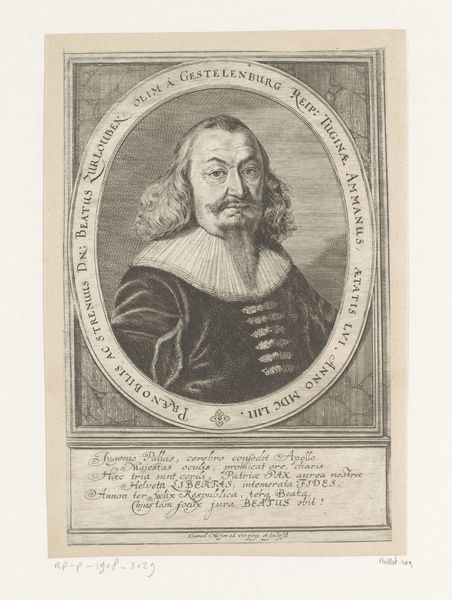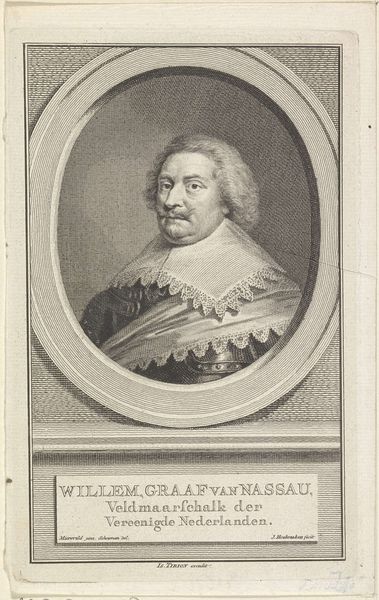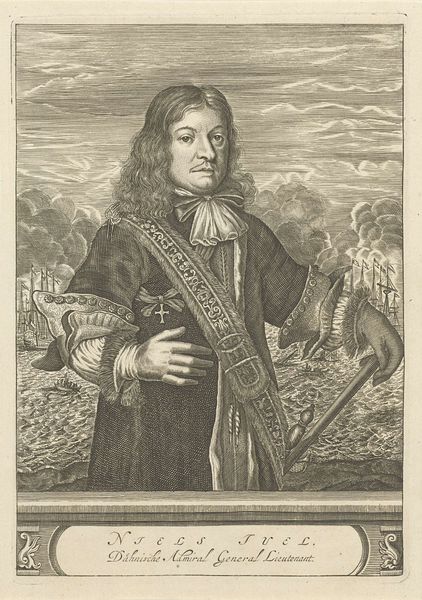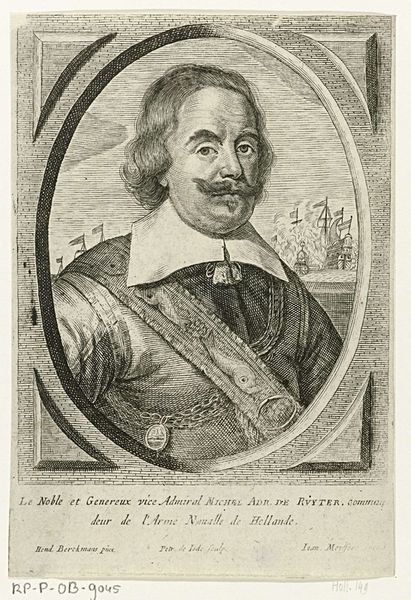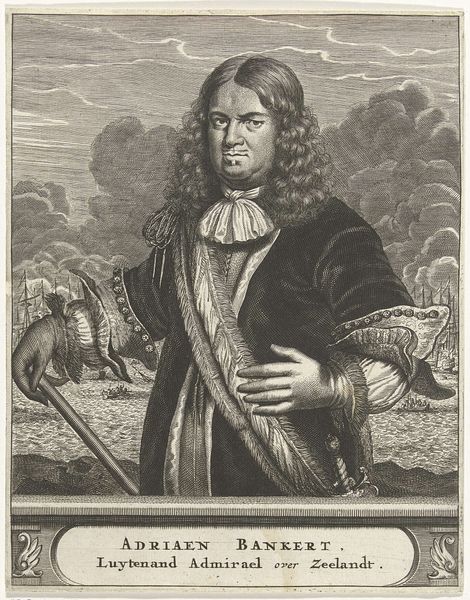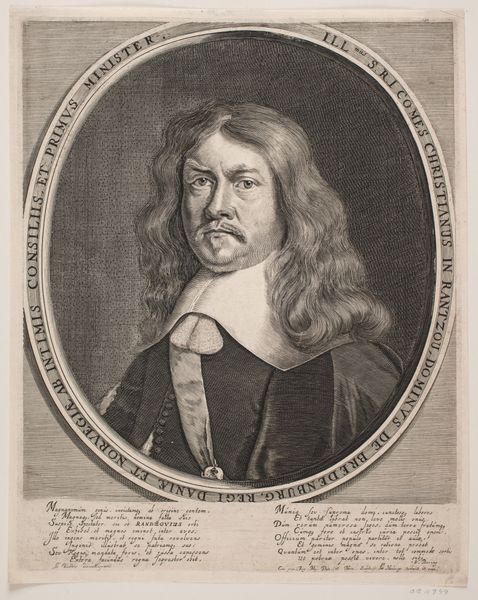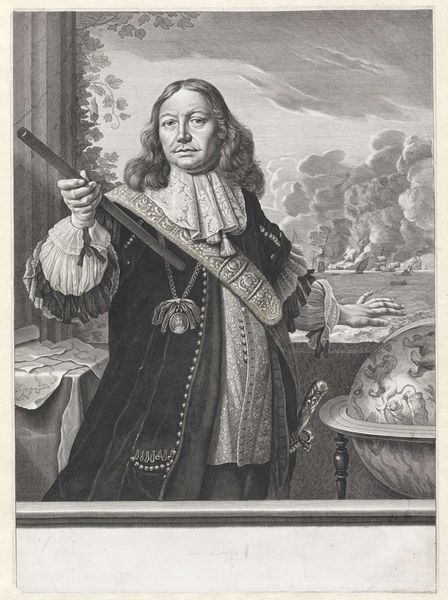
engraving
#
portrait
#
baroque
#
dutch-golden-age
#
old engraving style
#
caricature
#
portrait reference
#
portrait drawing
#
history-painting
#
engraving
Dimensions: height 195 mm, width 149 mm
Copyright: Rijks Museum: Open Domain
Curator: This is an engraving depicting Michiel Adriaensz de Ruyter, likely created between 1663 and 1695. Note the exquisite linework. What are your initial thoughts? Editor: There's a clear sense of power here, a proud stance against the backdrop of a naval battle. But also a stiff formality, an almost comical grandeur. Curator: Precisely! The engraving employs a strategic use of hatching and cross-hatching to define the admiral's features, the fabric of his coat, and even the tumultuous sky. The linear quality is so very deliberate. Editor: Absolutely, but this formality, this constructed image, tells us so much about the project of Dutch identity at this time. The cannons, the ships—symbols of power projected through a specific individual. Who was he really fighting for? What were the global ramifications of these battles? Curator: It is about power, the sharp contrasts emphasize the opulence of his attire, symbolic of the Dutch Golden Age’s economic and political strength, realized through a visual lexicon of carefully rendered lines. Editor: But at what cost? We need to ask ourselves, was the Dutch Golden Age golden for everyone? This man likely profited from colonialism, slavery… shouldn't those histories be present, somehow, in our reading of this image? It’s not enough to focus solely on technique and composition, ignoring the realities outside the frame. Curator: While context is essential, we can still admire the artist's skillful use of line to convey texture and form, the engraving itself is a marvel of technical execution. Editor: I agree, and maybe acknowledging that tension is the first step towards a truly meaningful reading of this historical document. One where the artist's technique isn't detached from the subjects socioeconomic reality. Curator: Perhaps by viewing these sharp strokes we can understand it as an endorsement of conflict through a portrait. Editor: Maybe, this has allowed us to view this image with more of a historical critical lens; something for us all to walk away with.
Comments
No comments
Be the first to comment and join the conversation on the ultimate creative platform.
